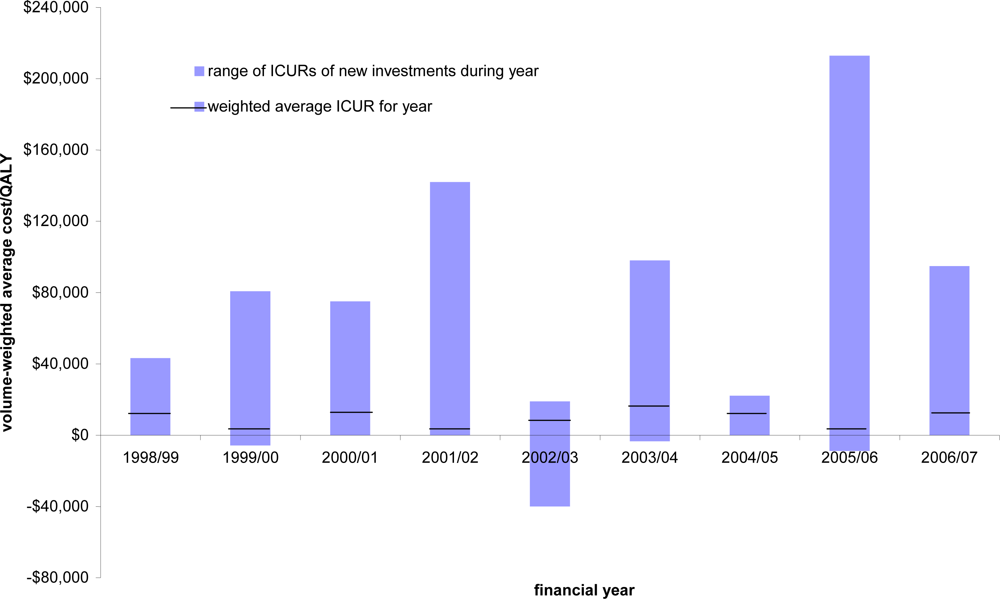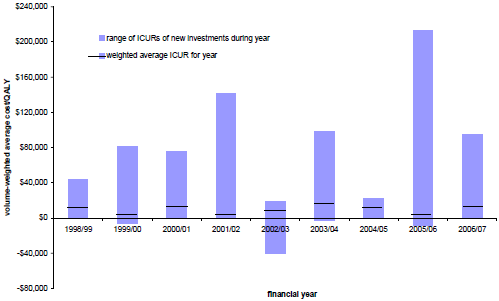Comments on “Simoens, S. Health Economic Assessment: A Methodological Primer. Int. J. Environ. Res. Public Health 2009, 6, 2950-2966”—New Zealand in Fact Has No Cost-Effectiveness Threshold
Abstract
:
References and Notes
- Simoens, S. Health economic assessment: a methodological primer. Int. J. Environ. Res. Public Health 2009, 6, 2950–2966. [Google Scholar]
- Cleemput, I; Neyt, M; Thiry, N; De Laet, C; Leys, M. Thresholds for Cost-Effectiveness in Health Care; KCE reports 100A. Belgian Health Care Knowledge Centre (KCE), Brussels, Belgium. 2008.
- Metcalfe, S; Dougherty, S; Brougham, M; Moodie, P. PHARMAC measures savings elsewhere to the health sector. N Z Med. J 2003, 116, 362. [Google Scholar]
- Grocott, R. Applying Programme Budgeting Marginal Analysis in the health sector: 12 years of experience. Exp. Rev. Pharmacoecon 2009, 9, 181–187. [Google Scholar]
- Prescription for Pharmacoeconomic Analysis: methods for cost-utility analysis, Version 2. PHARMAC: Wellington, New Zealand, 2007. Available online: http://www.pharmac.govt.nz/2007/06/19/PFPAFinal.pdf (accessed March 2010).
- Birch, S; Gafni, A. The ‘NICE’ approach to technology assessment: an economics perspective. Health Care Manag. Sci 2004, 7, 35–41. [Google Scholar]
- Grocott, R; Metcalfe, S. Going against the flow: the impact of PHARMAC not funding COX-2 inhibitors for chronic arthritis. N Z Med. J 2005, 118, 1690. [Google Scholar]
- McCabe, C; Claxton, K; Culyer, AJ. The NICE cost-effectiveness threshold: what it is and what that means. Pharmacoeconomics 2008, 26, 733–744. [Google Scholar]
© 2010 by the authors; licensee Molecular Diversity Preservation International, Basel, Switzerland. This article is an open-access article distributed under the terms and conditions of the Creative Commons Attribution license (http://creativecommons.org/licenses/by/3.0/).
Share and Cite
Metcalfe, S.; Grocott, R. Comments on “Simoens, S. Health Economic Assessment: A Methodological Primer. Int. J. Environ. Res. Public Health 2009, 6, 2950-2966”—New Zealand in Fact Has No Cost-Effectiveness Threshold. Int. J. Environ. Res. Public Health 2010, 7, 1831-1834. https://doi.org/10.3390/ijerph7041831
Metcalfe S, Grocott R. Comments on “Simoens, S. Health Economic Assessment: A Methodological Primer. Int. J. Environ. Res. Public Health 2009, 6, 2950-2966”—New Zealand in Fact Has No Cost-Effectiveness Threshold. International Journal of Environmental Research and Public Health. 2010; 7(4):1831-1834. https://doi.org/10.3390/ijerph7041831
Chicago/Turabian StyleMetcalfe, Scott, and Rachel Grocott. 2010. "Comments on “Simoens, S. Health Economic Assessment: A Methodological Primer. Int. J. Environ. Res. Public Health 2009, 6, 2950-2966”—New Zealand in Fact Has No Cost-Effectiveness Threshold" International Journal of Environmental Research and Public Health 7, no. 4: 1831-1834. https://doi.org/10.3390/ijerph7041831
APA StyleMetcalfe, S., & Grocott, R. (2010). Comments on “Simoens, S. Health Economic Assessment: A Methodological Primer. Int. J. Environ. Res. Public Health 2009, 6, 2950-2966”—New Zealand in Fact Has No Cost-Effectiveness Threshold. International Journal of Environmental Research and Public Health, 7(4), 1831-1834. https://doi.org/10.3390/ijerph7041831




